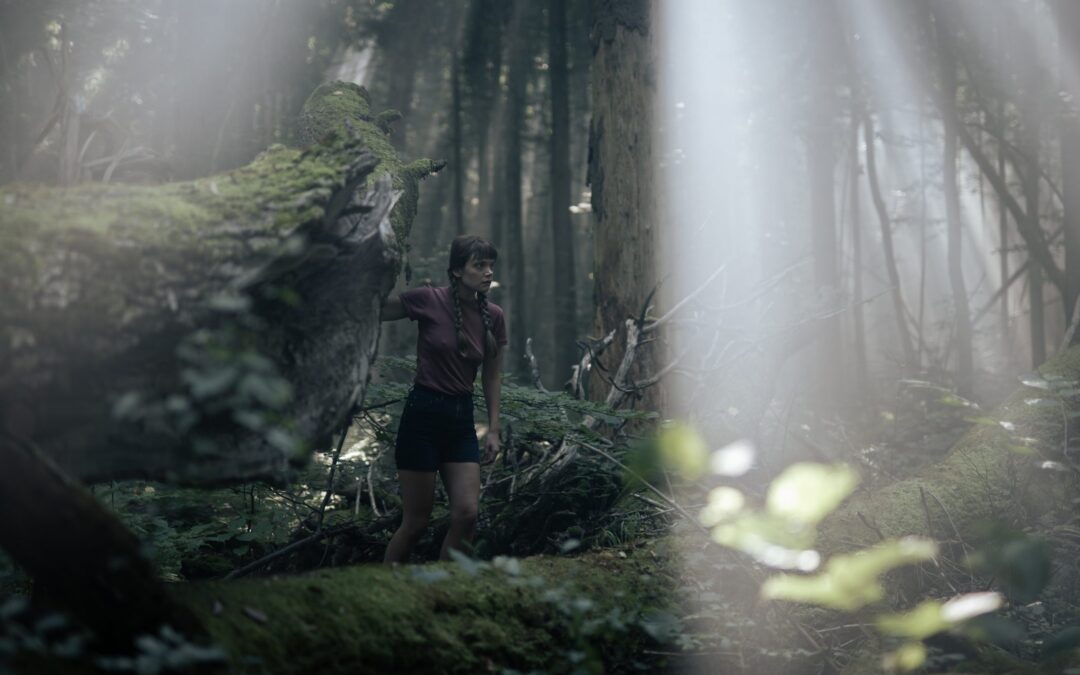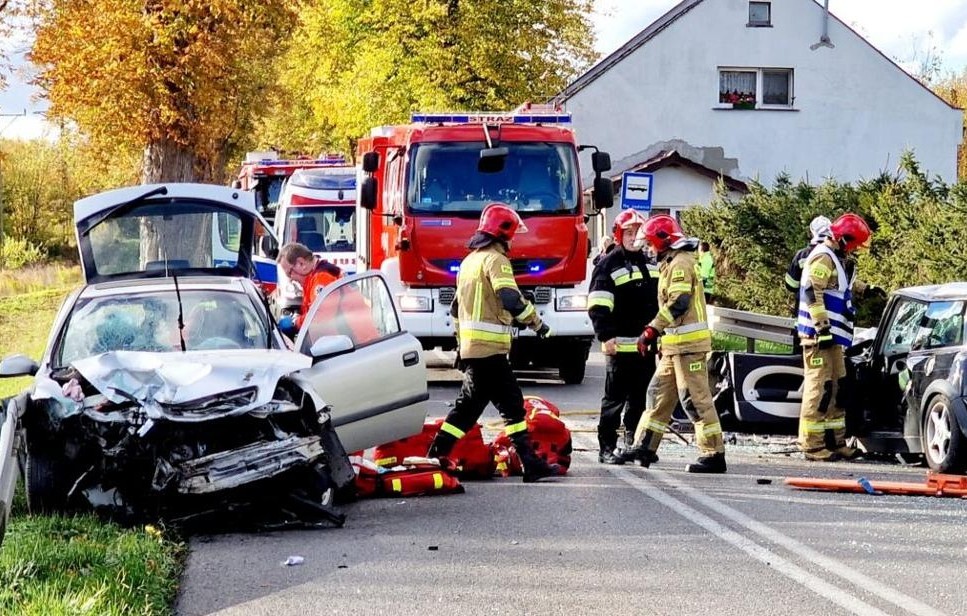Keep our news free from ads and paywalls by making a donation to support our work!

Notes from Poland is run by a small editorial team and is published by an independent, non-profit foundation that is funded through donations from our readers. We cannot do what we do without your support.
By Darek Kuźma
A new film dives into the life of pioneering Polish biologist, ecologist and environmental activist Simona Kossak, who dedicated herself to the protection and preservation of the natural diversity of Białowieża Forest, Europe’s largest remaining primeval forest.
Kossak is routinely remembered in Poland as a quasi-romantic figure, famous perhaps above all for a series of eccentric images of her interacting with animals.
Yet that paints only a fragment of a far more complex picture of a fearless activist and passionate scientist who was ahead of her time in advocating the interdependency of human beings with the natural world, and whose values deserve to be far more celebrated in modern Poland.
Polish biologist Simona Kossak and her assortment of wild animal friends. pic.twitter.com/7Vy5SUQNdh
— Birch Brother 🪓 (@BjorkBrodern) July 25, 2024
Born in 1943 to a family of famous artists, Kossak’s studies in biology at the Jagiellonian University in Kraków marked a different – and within her own family, controversial – path to that of her ancestors.
After completing her studies, in 1971 she took up a position with the Polish Academy of Science’s Mammal Research Centre in Białowieża.
It was there that she moved into the Dziedzinka forester’s lodge, an isolated wooden cabin where she would live for over 30 years with her life partner Lech Wilczek, as well as a menagerie of orphaned wild animals, including a boar named Żabka (Froggy) and a kleptomaniac crow, Korasek.
In a remarkable series of wildlife pictures published exclusively by Notes from Poland, photographer @Exen captures the beauty of the animals of the Białowieża Forest, one of the last remnants of the primeval forest of the European plainhttps://t.co/8z6N6HOmCz
— Notes from Poland 🇵🇱 (@notesfrompoland) December 9, 2019
During her time living in Dziedzinka and working in Białowieża, later at the state Forest Research Institute, Kossak studied the behaviour of local wild animals such as deer, wolves and lynxes. Her work – in which she promoted coexistence between humans and wildlife – led her to become a prominent voice in environmental advocacy.
The biologist became a public figure, using her books and radio programmes to champion conservation and sustainable forestry. In particular, she led a campaign against the cruel methods used by zoologists to catch animals for research and got into a public dispute with her former employer about how to best protect the lynx population of Białowieża.
In 2000, she was awarded Poland’s Gold Cross of Merit in recognition of her scientific achievements and popularisation of nature conservation. Kossak passed away in 2007.
The above account, however, leaves out the interpersonal dynamics that also influenced Kossak’s life – her bittersweet relationship with Wilczek, a photographer, writer and naturalist, as well as her troubled relations with her fatuous mother, Elżbieta Kossak.
In his newly released film, Simona Kossak, writer and director Adrian Panek thus makes the reasonable argument that we can only appreciate Kossak’s legacy by making an honest attempt to understand who she really was and why she chose to live and love the way she did.
For that reason, Panek chose to depict the most formative period of Kossak’s life – between defending her master’s thesis in 1970 and defending her doctoral thesis in 1980 – when she rebelled against her family’s glorified past, moved to Dziedzinka, fell in love with wildlife and found her calling.

A still from Simona Kossak, depicting Kossak and Wilczek at Dziedzinka (photo credit: Next Film press materials)
“I remember articles about Simona as this hippie figure who locked herself in a hut to study nature, and lived with a boar, a crow and a menagerie of animals. Unusual, but it wasn’t enough for me as a filmmaker,” Panek recalls.
“Yet I couldn’t get her out of my head. I read Anna Kamińska’s [biography] Simona and understood the disappointments and hardships of her life. Then I met her niece, Joanna Kossak,” the writer-director continues. “I realised that, in filmmaking terms, this is not the story of a girl who left home to live in the woods, but of a girl who by doing so found her way back home.”
He decided to tell the distinguished conservationist’s story via the relationships that shaped her. Viewers meet Kossak in Kraków when she is on the verge of cutting ties with her family. Being a Kossak – her father, grandfather and great-grandfather were eminent Polish painters – was a blessing if you had the talent to fill blank canvases with art, and a curse if you did not. Kossak did not have an artistic bone in her body, but craved science and ecology.
“It led to psychological warfare with her mother and sister, who were increasingly hostile towards her. The emotionally draining confrontations were a major factor in Simona seeking a space in which she could be someone other than who everyone else wanted her to be,” Panek explains.
“I did not want the relationship with her mother to hijack the film, but Elżbieta Kossak’s impact on her daughter was undeniable and not always aggravating. She visited her many times in Dziedzinka and clashed with Wilczek but also, paradoxically, gave Simona strength to fight for what she believed in.”
Though Panek does not shy away from the romantic and sexual sides of her lifelong relationship with Wilczek, he chose to frame him primarily, and truthfully, as Simona’s first real mentor who helped her realise the beauty and the grandiosity of the natural world.
“He introduced Simona to her most trusted animal companion, Żabka the boar,” Panek says. “Their relationship was tumultuous, Wilczek cheated on her, but when she accepted it for what it was, it gave her further strength. But even if their connection was often toxic, Lech’s presence, love and intransigence influenced her.”
🎬 Huge congrats to "Simona Kossak" by Adrian Panek for winning the People’s Choice Award at the 15th Toronto Polish Film Festival! 🏆🎉
Thank you to all the viewers who voted! 💛 pic.twitter.com/9PWs96M4q1— EKRAN Toronto Polish Film Festival (@EkranFilm) November 26, 2024
To add authenticity to the film – which fictionalises some aspects of Kossak’s life to make the story more cinematic – the writer-director used Wilczek’s striking photographs of Kossak happily posing with animals at Dziedzinka as the basis for numerous scenes, which he believes present the most honest vision of the biologist.
At the same time, Panek goes out of his way to reiterate that Simona Kossak is not the definitive film biography of the eponymous character but an interpretation.
“You can know all the facts about a person but the truth is you may never get to the bottom of who this person was,” he acknowledges. “We tried to be as faithful to her – and others’ visions of her – as we could, but it is still a creation.”
Honesty also drove his decision to depict Kossak’s ever-evolving connection with nature. “She felt free among trees, observing animals, learning plants. I knew observing her this way would tell the audience more than words could,” Panek explains. “We tried to shoot as much as possible in Białowieża and its vicinity, yet it was often impossible because of the events on the Polish-Belarusian border.”
Scientists have raised concern over the environmental impact of Poland's new anti-migrant wall on the Belarus border.
The government says adequate measures, such as animal gates, are in place, but there remain questions over how they will work in practice https://t.co/g3z3GX7etc
— Notes from Poland 🇵🇱 (@notesfrompoland) September 5, 2022
The writer-director wanted the forest to be a major character in the film, owing to its importance to Kossak. “Ultimately, this was probably the most essential relationship of her life – the one with the natural world,” Panek explains.
“During the Covid lockdown I stayed in the countryside, near the mountains. I was able to observe the daily changes in the natural world and couldn’t help but imagine what such a connection would mean to someone who lived in the forest for over 30 years without TV, radio or electricity,” he says. “You cannot understand Simona without seeing her free among the trees and then fighting those who perceive trees in terms of profit margin.”
It is a crying shame, Panek exclaims, that half a century later the Polish authorities are still not able to learn the lesson. “The climate changes that produced the recent floods [in central Europe] and numerous other catastrophes are to an extent attributable to the ongoing relentless deforestation of Białowieża, further precipitated by the hybrid war on the border.”
After devastating floods in Poland, experts and policymakers are debating how to better prepare for extreme weather events.
Improved infrastructure, nature-based solutions, and better warning systems will all be part of the answer, writes @WojciechKosc https://t.co/QCTUIMxa01
— Notes from Poland 🇵🇱 (@notesfrompoland) October 24, 2024
The writer-director cites an article published by the Polish Academy of Sciences which states that almost 60% of Polish forests currently consist of pines, trees that are not as adaptable as oaks, birches and other native species.
“[This is] a remnant of the decisions made in the 1970s that Simona vehemently opposed,” he points out. “It is entirely possible that the forest regeneration process will ultimately fail and in 20 or 30 years Poland might become a deforested wasteland…This clash between ecology and the economy was a crucial part of Simona’s struggle, and in the film that’s her primary battleground.”
Panek highlights how the bucolic scenes of domesticated nature painted by the Kossak family artists charmed their audience in Poland. This is just one part of a broader phenomena where the natural world has been pushed down to the very bottom of our collective consciousness, he says.
“Simona was against that,” the writer-director explains. “What she tried to say for decades is only now starting to resonate as more and more people learn that climate change is real. And that in the long term, we cannot survive without nature.”

Notes from Poland is run by a small editorial team and published by an independent, non-profit foundation that is funded through donations from our readers. We cannot do what we do without your support.
Main image credit: Next Film press materials




















